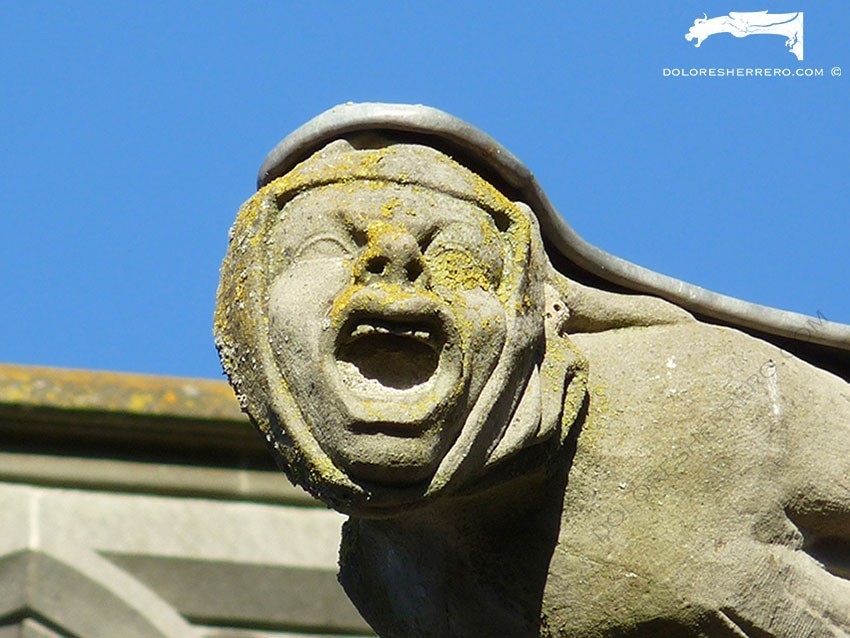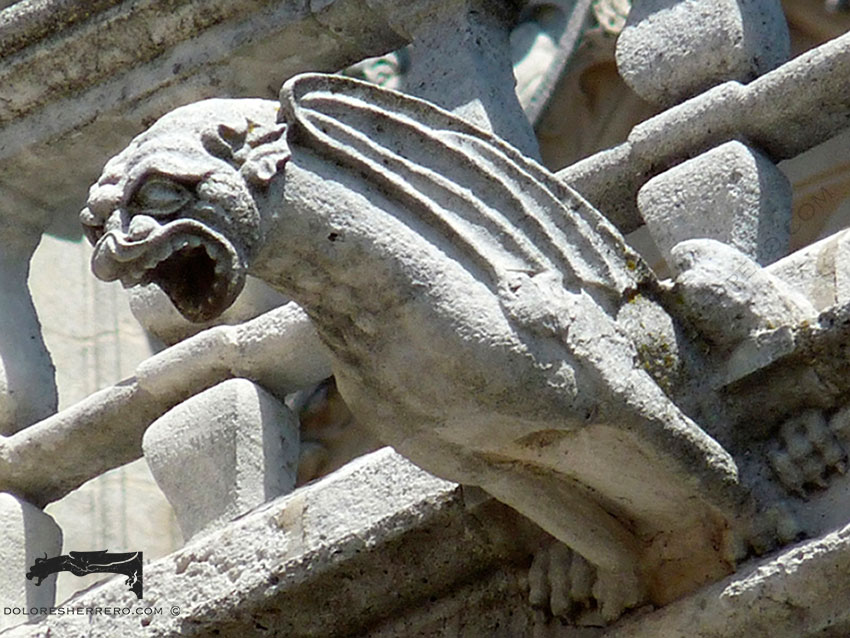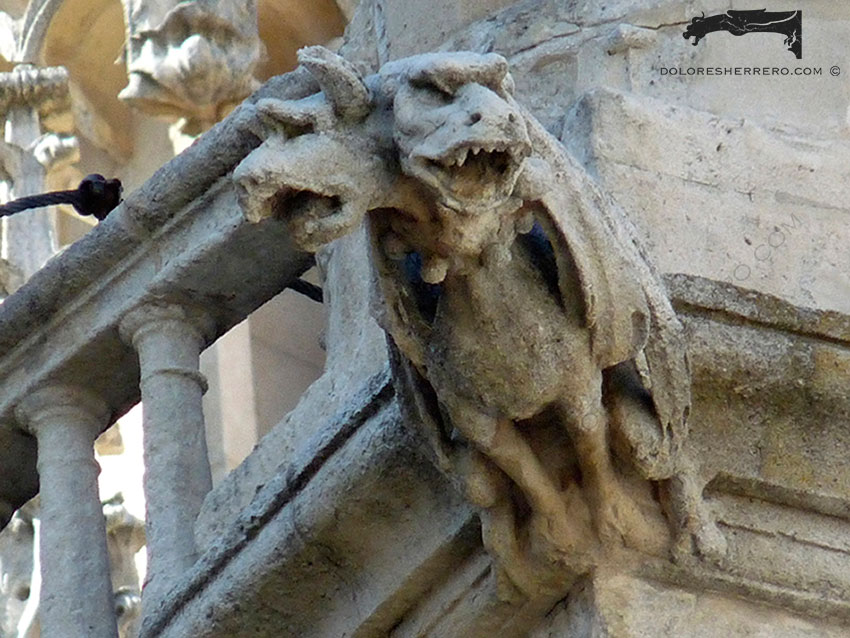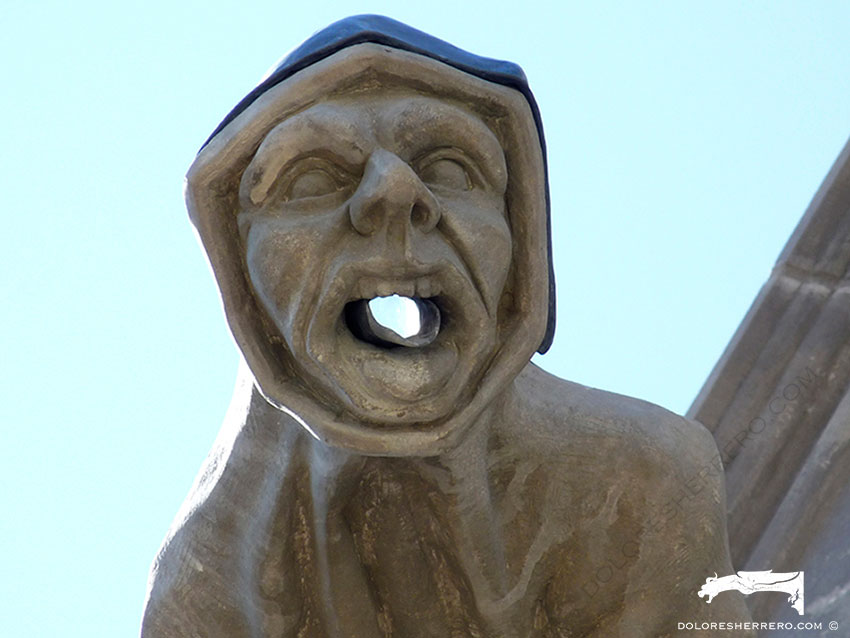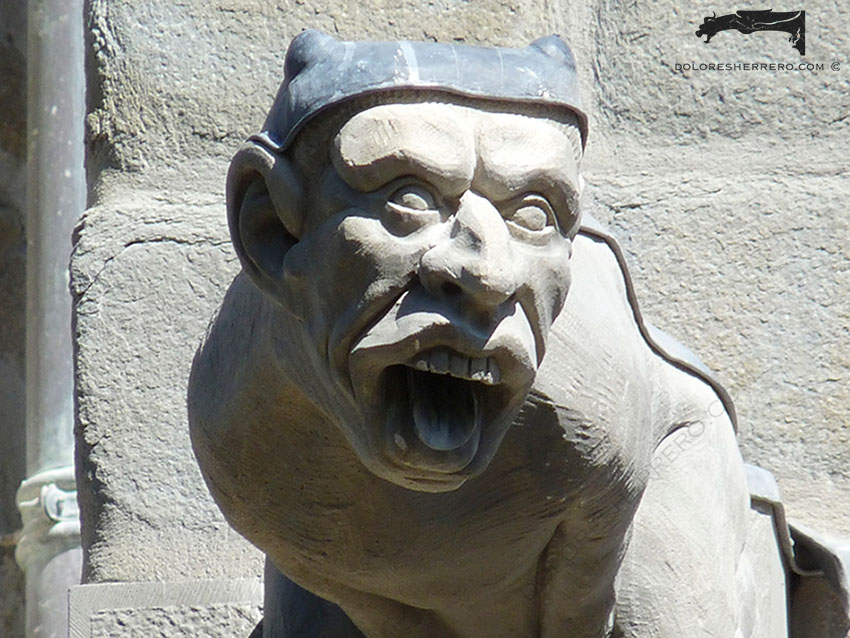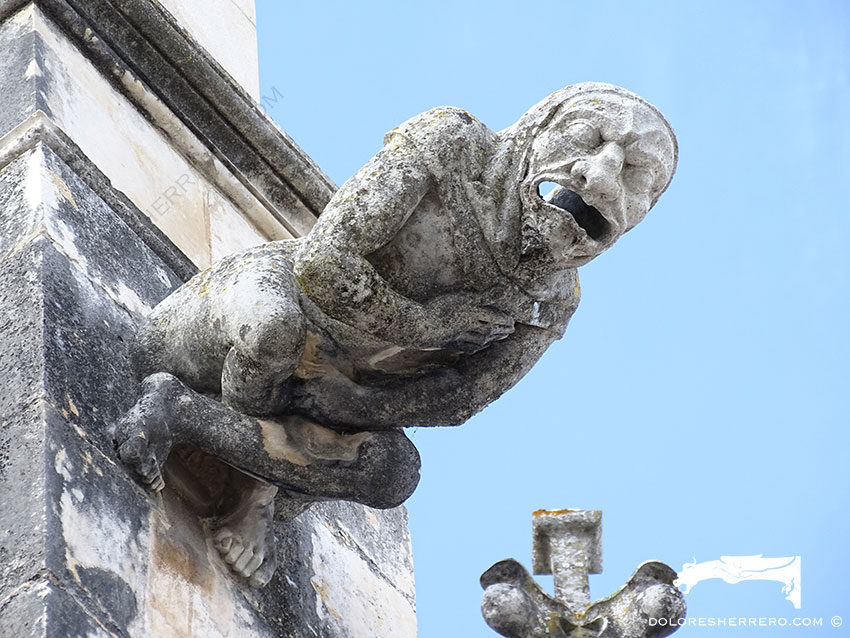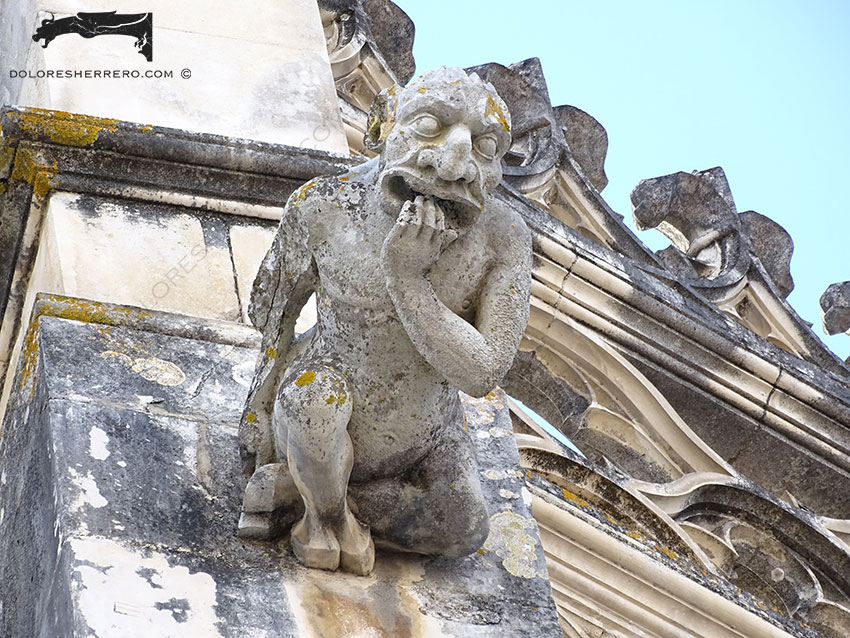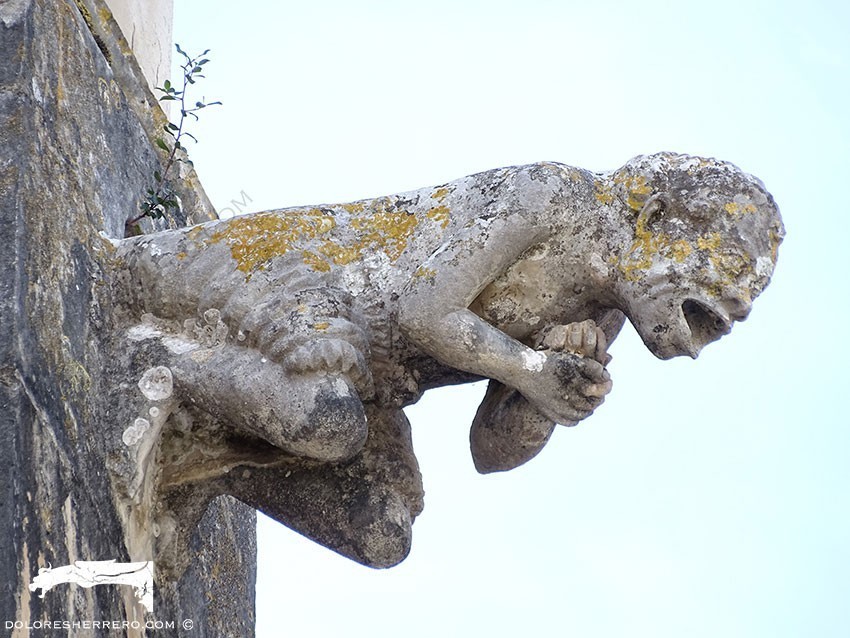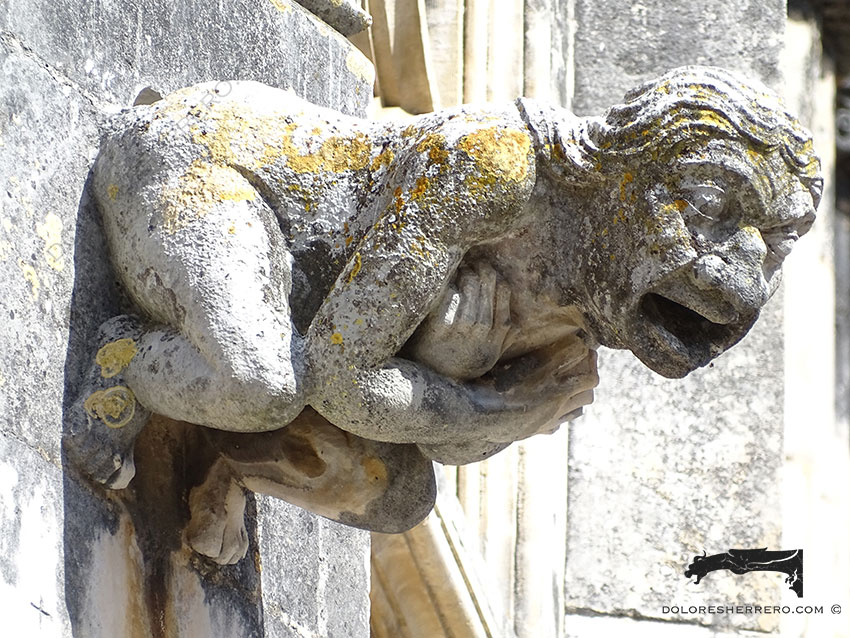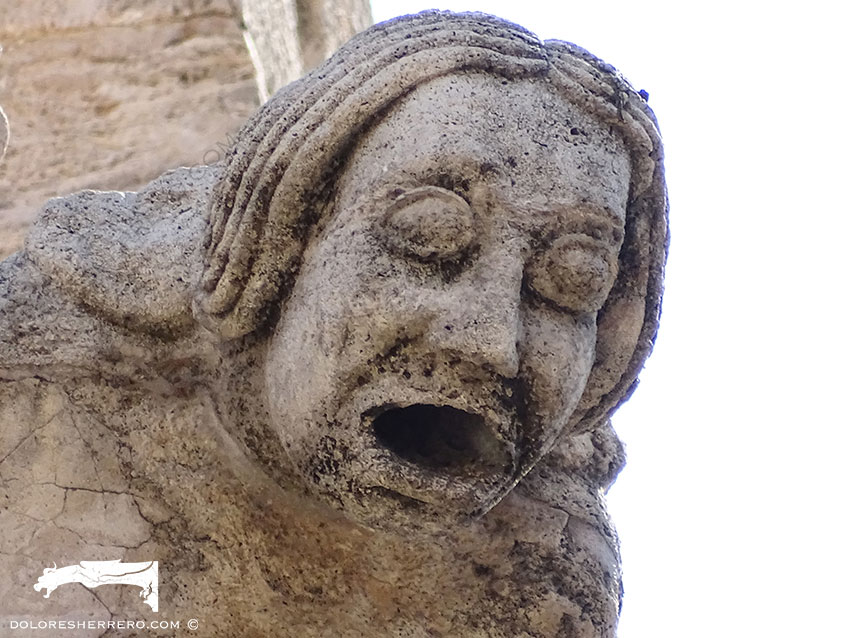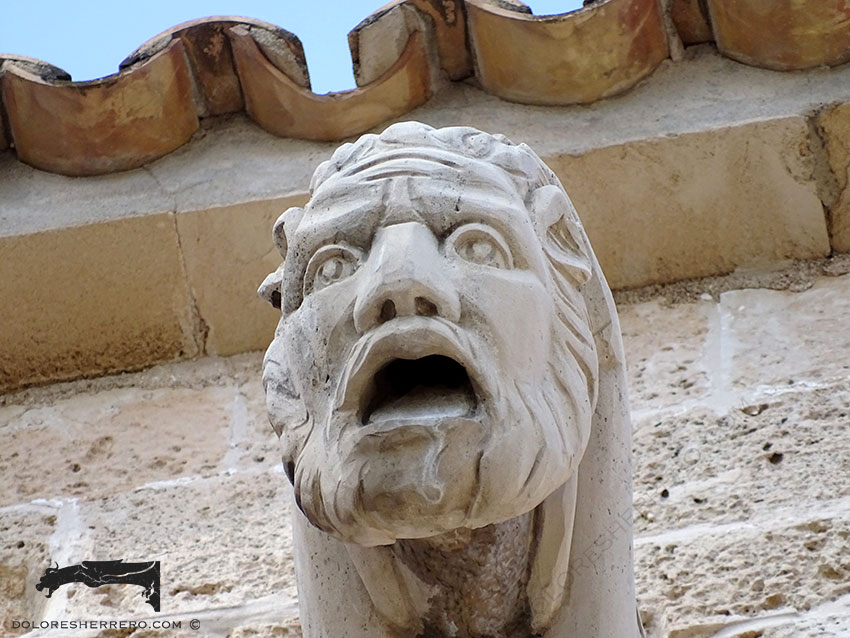The Expressive Dimension of the Gargoyle
Gargoyles provoke all sorts of reactions and feelings when we look at them, and not just because of the figures they depict, but also because most of them are strikingly expressive.
Functionality aside, gargoyles are pure image.
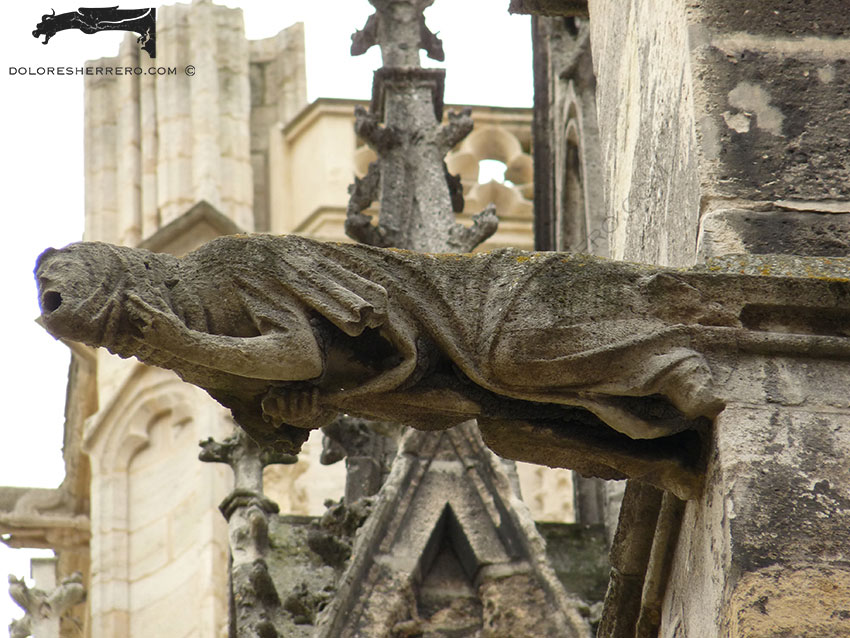
Bordeaux Cathedral (France)
Ugliness and Dissonance in the Gargoyle’s Face
Ugliness is one of the characteristics associated with images of gargoyles with terrible, disturbing expressions, something that’s normally seen in all kinds of demons and monsters.
Philosophical Reflections on Ugliness
There are a quite few literary references to ugliness. For example, Saint Agustine (4th-5th century) says that the body’s beauty comes from the harmony of its parts. For him, the lack of that harmony offends and this deformity will be corrected by the Creator, using ways that only He knows. “In the resurrection all ugliness will be made beauty”, he says.
Plotinus (3rd century) in his Enneads (I, 6) also states: “Since everything void of form is by nature fitted for its reception, as far as it is destitute of reason and form it is base and separate from the divine reason. And this is absolute baseness”.
According to John Ruskin (1819-1900), beautiful shapes are taken from Nature, so things not taken directly from it “are necessarily ugly”.
Threatening Gargoyles: The Power of Fear
Regarding the symbolic meaning or function of gargoyles, some authors speak—among others—of an intimidating function. This function aims to provoke fear. The idea of inducing fear may also explain why certain gargoyles display highly expressive and threatening gestures; as Janetta Rebold Benton states, they act as a kind of scarecrow that frightens the devil and keeps the interior of the building safe.
Nevertheless, gargoyles do not only exhibit terrifying and disturbing expressions. We can also find gestures that reveal a wide range of emotions: compassion, anger, suffering, laughter, and more.
Through their expressions and postures, gargoyles become true bearers of emotion carved in stone—ready to engage in silent dialogue with those who contemplate them.
Communicative Gargoyles: A Gallery of Gazes and Emotions in Stone
- Basilica of St. Nazaire in Carcassonne (France)
- Basilica of St. Nazaire in Carcassonne (France)
- Burgos Cathedral (Spain)
- Burgos Cathedral (Spain)
- Cathedral of St. Michel in Carcassonne (France)
- Cathedral of St. Michel in Carcassonne (France)
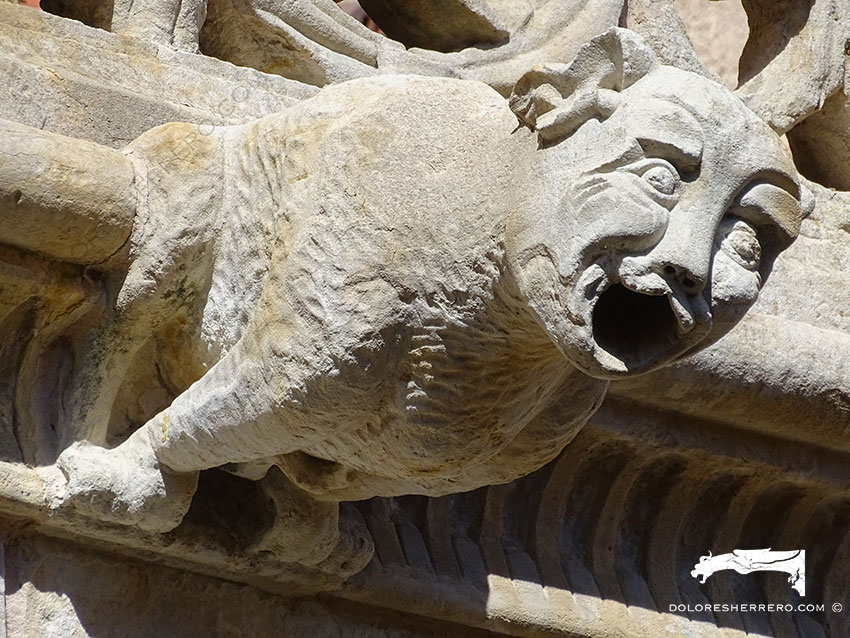
House of Shells in Salamanca (Spain)
- Batalha Monastery (Portugal)
- Batalha Monastery (Portugal)
- Batalha Monastery (Portugal)
- Batalha Monastery (Portugal)
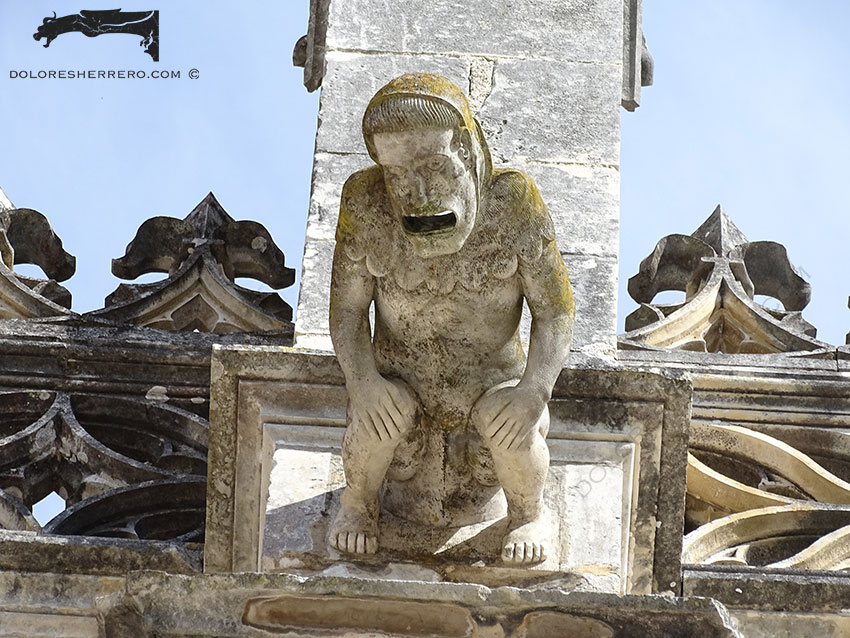
Batalha Monastery (Portugal)
- Valencia Lonja (Spain)
- Palma de Mallorca Cathedral (Spain)

Church of Our Lady in Trier (Germany)
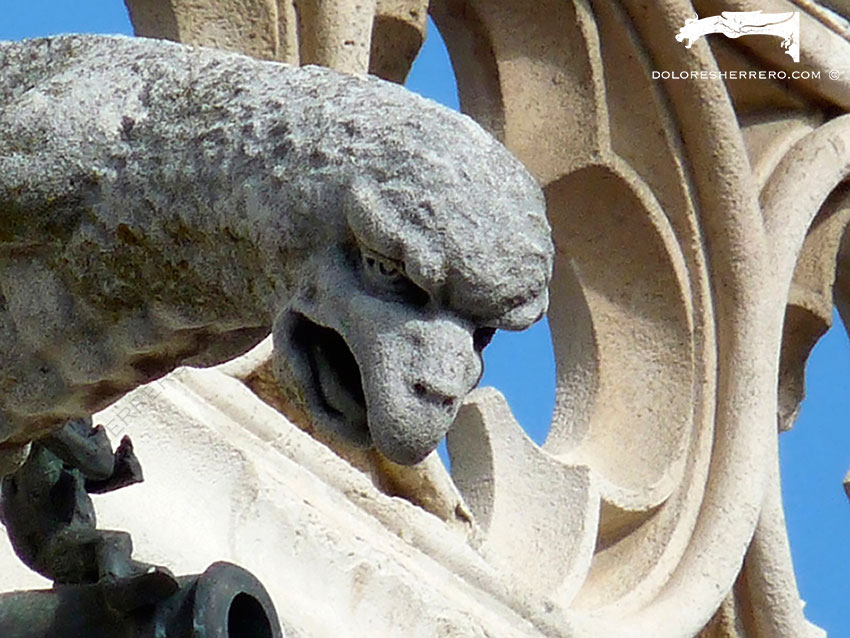

Cathedral of María Inmaculada in Vitoria (Spain)
Bibliography
Obras de San Agustín XVII. La Ciudad de Dios, Vol. 2, libros XIII-XXII, Madrid, Biblioteca de Autores Cristianos, 1965, XXII, 19, 2.
PORFIRIO, Vida de Plotino. PLOTINO, Enéadas I-II, Madrid, Editorial Gredos, S. A. Biblioteca Clásica Gredos, 57, 1992.
REBOLD BENTON, J., Holy Terrors. Gargoyles on medieval buildings, New York, Abbeville Press, 1997.
RUSKIN, J., Las siete lámparas de la arquitectura, Barcelona, Editorial Alta Fulla, 1997.

Doctor of Art History and researcher specializing in the study of gargoyles.
I am Dolores Herrero Ferrio, and my thesis, “An Approach to the Study of Gargoyles of Gothic Cathedrals in Castilla and León”, is dedicated to the study of these fascinating figures.
If you like gargoyles and art history, you will also enjoy my book, “The Gargoyle and Its Iconography,” a book I have written with great care for those interested in the world of gargoyles.
I have created my own Encyclopedia of Gargoyles, a Gargopedia to share with you, where you will discover all the secrets and wonders of these enigmatic sculptures.
I hope you enjoy this Gargopedia as much as I have enjoyed creating it, and remember that each gargoyle has a story to tell, and here you will discover them all.
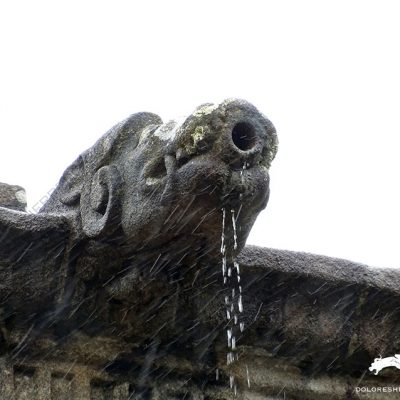 Gargoyles: Definition and Function in Medieval Architecture
Gargoyles: Definition and Function in Medieval Architecture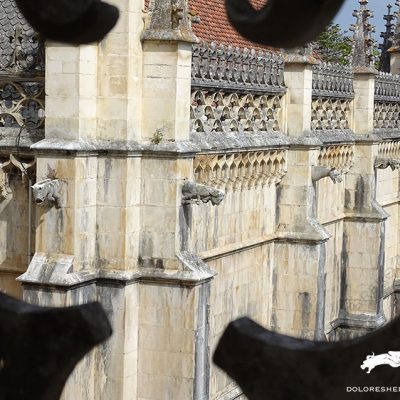 Gargoyles and Their Typologies: An Introduction to Their Multiple Forms
Gargoyles and Their Typologies: An Introduction to Their Multiple Forms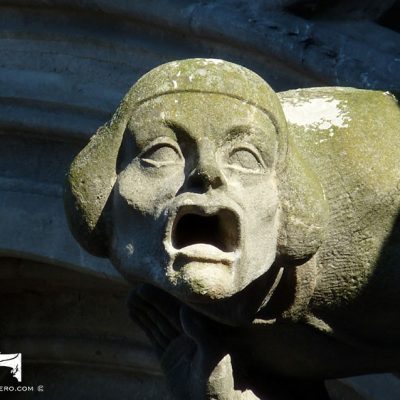 Gargoyles and Their Fascination in the History of Art: Essential Quotes from Distinguished Authors
Gargoyles and Their Fascination in the History of Art: Essential Quotes from Distinguished Authors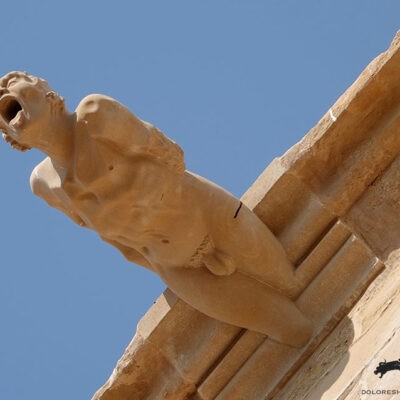 Nudity in Gargoyles
Nudity in Gargoyles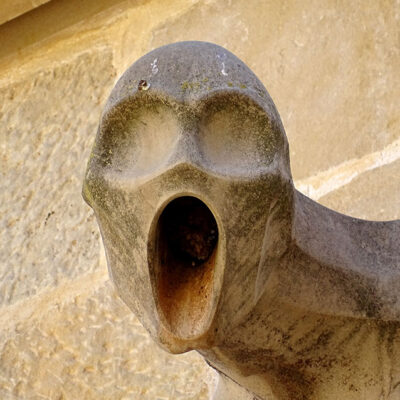 The Scream in Gargoyles
The Scream in Gargoyles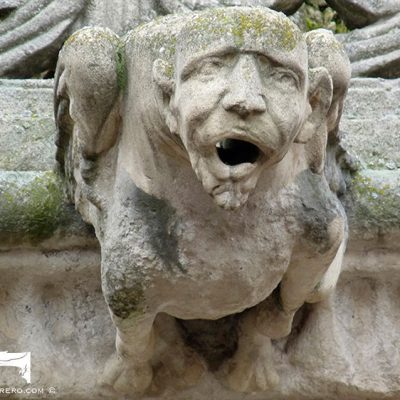 Gárgolas expresivas en el arte escultórico. Una mirada a su fuerza visual
Gárgolas expresivas en el arte escultórico. Una mirada a su fuerza visual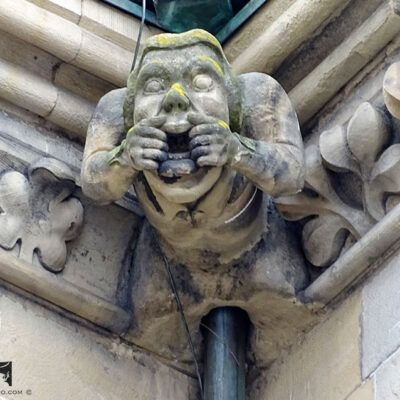 Gesturality in Gargoyles: Part One
Gesturality in Gargoyles: Part One
